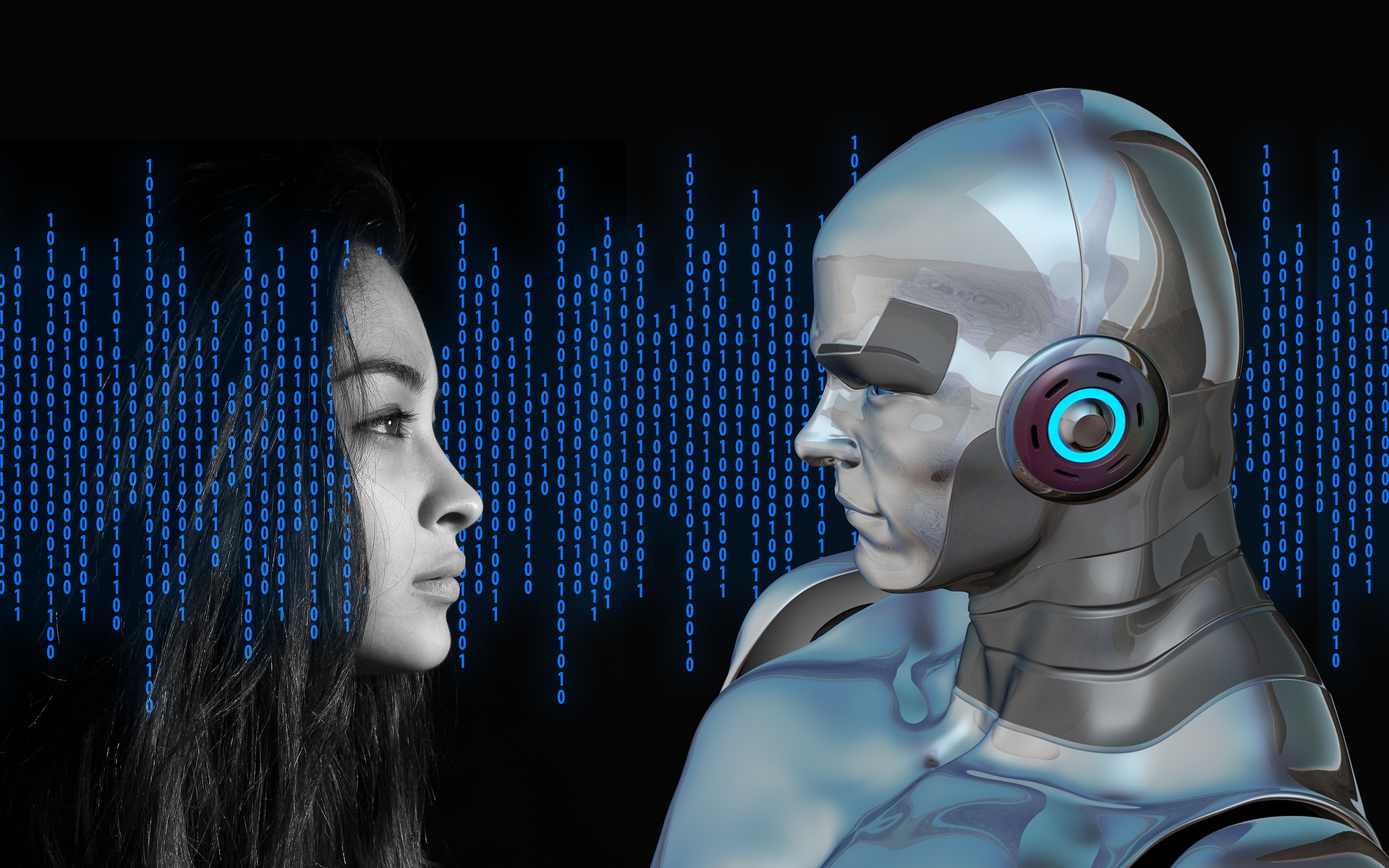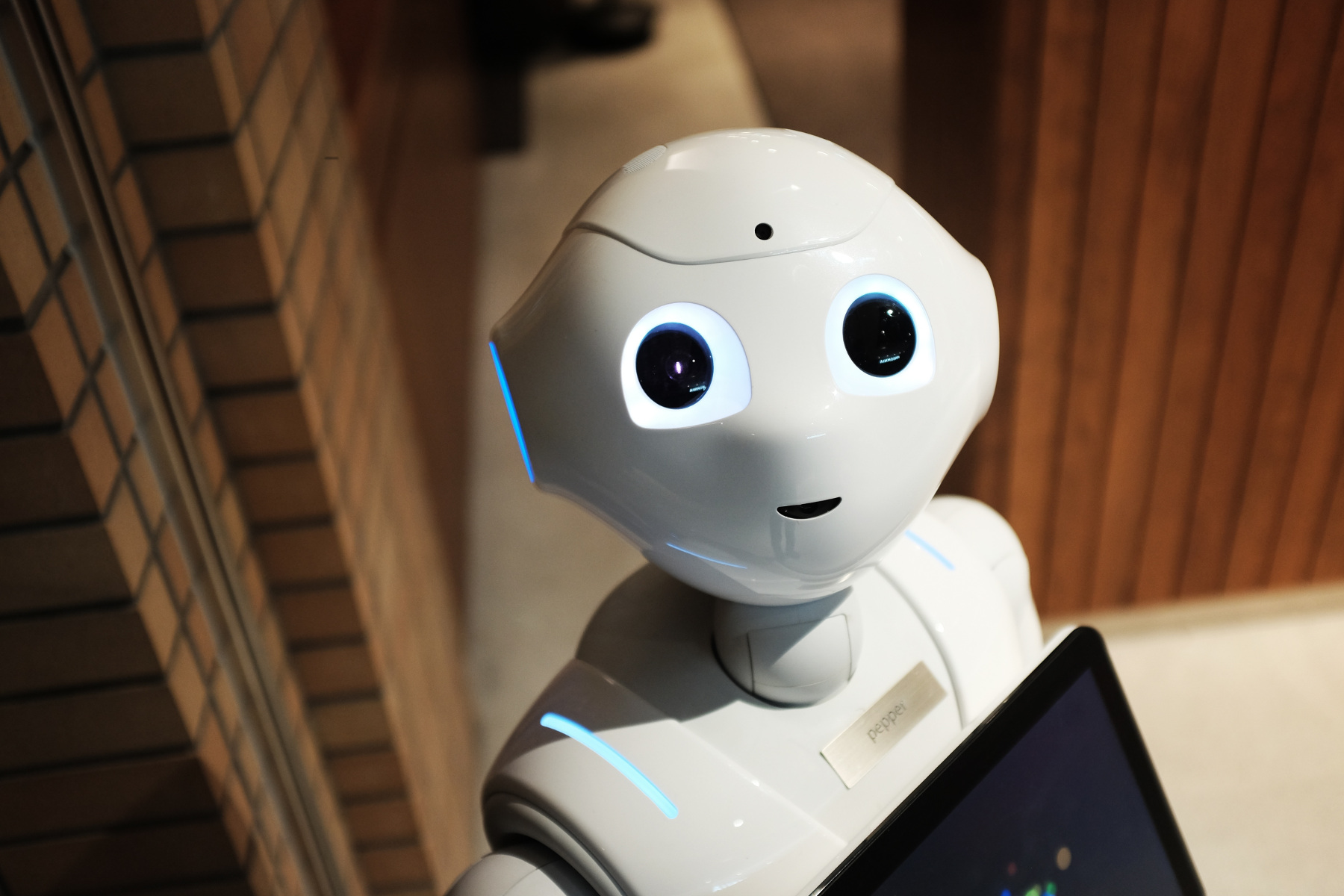Changing Human Perception to Be More Comfortable on Conversation with Robots
Robots are machines that have physically similar appearance a human and perform various complex acts -such as walking or talking- of a human being, according to definition of dictionary (Robot, n.d.). According to LaFrance (2016)’s article named “What Is a Robot”, the “robot” word was first used on a play, written by a Czech writer, Karel Čapek named Rossum’s Universal Robots. After Čapek’s play, the robot word quickly be famous and used as a word to describe the machines that can replace the human’s job with automation (LaFrance, 2016). Robots are used in industry and manufacturing, health, caring, visioning, military, transportation and a lot more areas at present. Day by day, the usability of robots is increasing and more people are interacting with robots (Robot, n.d.). That interaction increases the demanding on how robots are contacting with people. However, at present, the lack of conversation between robots and people might be seen due to their nature of to be programmed to do only some specific actions instead of being capable of thinking free as humans. The following sections will analyze that how robot dialogue will be improved on human-robot based interaction in near future based on that insufficiency of the robot dialogue.

According to Kidd and Breazeal (2004) from MIT Media Lab, people tend to be engaged with robots, more than software. In their research paper of experiment named “Effect of a Robot on User Perceptions” (Kidd, & Breazeal, 2004), the researchers set-up their experiment with three different stages. According to experiment, these stages are a person, a humanoid and an animated software looking similar to each other are being tested by the participants. In the first experiment of this research, participants’ engagement was compared in between people, humanoid and software. The findings showed that participants engaged humanoid more than animated software and engagement levels of humanoid and person were nearly same. This result led the experiment designers to think about the physical appearance of a robot makes the engagement. Furthermore, researchers came up with another hypothesis that evaluates the physical presence of the robots. Second experiment had set up with a physically reachable robot versus video of the same robot from a television. The result showed that there was not any significant difference between the two cases. As a summary of this experiment, robot was more engaging than the animated character, according to participants. First experiment’s hypothesis was about the perception of a robot versus animated character due to robot’s physical, material being status. The second experiment’s hypothesis about the physical presence or remote existence of the same robot. Participants were found the robot more credible than the animation, however the robot’s physical reachability was not the case. That experiment showed that a robot is a credible interface in a conversation, compared to animated software, because of its physical existence whether it’s remotely exist or reachable physically. (Kidd, & Breazeal, 2004)

In addition to first experiment, Breazeal & Velasquez (1999) from MIT AI Lab conducted another research. Research named “Robot in Society: Friend or Appliance?” (Breazeal, & Velasquez, 1999) can be given as another example for to understand how robots should communicate with people. In this research, Breazeal and Velasquez (1999) discusses about how robots’ emotions that are programmed, playing role into social interaction in between robots and their users. According to authors (Breazeal, & Velasquez, 1999), robots have to be easy to use and interact by a person has average knowledge in robotics. She argues that the interface of robot should be safe and efficient to interact with in contrast of complex and technical interfaces. In this research, researchers evaluate the perception of robots with three questions. First, how people perceive robots and how are these influence the interaction? Second, what channels of communication are being used in between robots and users? Third, how are these interactions impacting people on an emotional level? According to this research paper of Breazeal and Velasquez (1999), humans have intentions and behaviors and they tend to perceive behaviors from the others whom communicate with. That behavior of humans show that humans need to explain and predict the robot’s behavior to make an efficient conversation with robots. Humans use wide variety of sensory and motor modalities to communicate. They tend to understand the other’s motivational state to communicate efficiently. As an example, if the listener gets confused, teller slows down and repeats himself/herself. According to this information, robots have to read the motivational state, psychological structure from its user. In addition of this behavior, people tend to anthropomorphize their pets, empathize with them and care about them and make emotional bonds with their pets. Emotional bonding can be applied to robot with designing more friendly appearance to robot to improve communication in between user and robot as well. As a result, users will be likely to empathize with robots as well. However, this goal might be far from the present, until then, robots should be designed not to have negative impact on their users. Users are likely to find robots irritating when robots fail to meet users’ expectations. Humans are different than animals in communication area, they expect to share control with those who are interacting with. Conversations in between humans are mutually regulated, as the interaction unfolds, each participant’s behavior would be adapting to other. Humans can predict the behavior of the other through conversation. Robots could be adapted to human-like social interaction with a mechanism that can predict and explain the user’s behavior to have a proper communication in between robot and human. This mechanism could be also useful for teaching the robots what’s good or bad with teaching with empathizing channel. As a conclusion, Breazeal’s social robot model could increase the efficiency of the robots with emotion-inspired mechanisms, by that way users may find the robots friendly, instead of being annoying. (Breazeal, & Velasquez, 1999)

Another research shows that the robot dialogue should be adjusted to knowledge of the user to make communication efficient (Torrey et al.,2006). To prove that argument, Torrey (2006) and his coworkers did an experiment. Their first hypothesis was if they gave detailed information, novice users would benefit detailed information that robot gives in conversation but experts would not get any benefit of that. Their second hypothesis on that experiment was, when robots give less information to expert users, they would communicate more efficient. To find out this, researchers set-up a robot asking some kitchen tools knowledge tests and separates the people as novices and experts. When detailed info given, novices had benefit of that, meanwhile that did not affect the experts. However, on second experiment, researchers add a time limit to make a pressure on the participants. With that pressure, experts would not get any benefit of the detailed description and information, instead they got annoyed with the robot’s behavior. That research shows that, when dialogue of robot adapts to its user, the user of robot would be more engaged to the conversation and that will increase the efficiency of the robot. (Torrey et al., 2006)

This article tries to argue that robots need to be improved in dialogue area to interact with its user efficiently. To approach the resolution of the improving dialogues, these results might be taken as notes when developing robot dialogues: Robots, due to their material based physical appearance, can be found more engaging and credible to users that are interacting with, compared to animated software (Kidd, & Breazeal, 2004). In addition to that note, to make robot more friendly and understandable, robots should be developed with emotionally programmed, predictable behavior and empathizing mechanism to make emotional bonds between robot and user to grant an efficient conversation (Breazeal, & Velasquez, 1999). Another point of an efficient conversation in between robot and its user is to make user’s knowledge recognized by the robot, by that way the efficiency and the engagement of the conversation would be increased, otherwise users might find the robot annoying and irrelevant to user’s knowledge (Torrey et al., 2006).
References
-
Breazeal, C., & Velasquez, J. (1999, May). Robot in society: friend or appliance. In Proceedings of the 1999 Autonomous Agents Workshop on Emotion-Based Agent Architectures (pp. 18-26).
-
Kidd, C. D., & Breazeal, C. (2004, September). Effect of a robot on user perceptions. In Intelligent Robots and Systems, 2004. (IROS 2004). Proceedings. 2004 IEEE/RSJ International Conference on (Vol. 4, pp. 3559-3564). IEEE.
-
LaFrance, A. (2016, March 22). What Is a Robot? Retrieved March 27, 2017, from http://www.theatlantic.com/technology/archive/2016/03/what-is-a-human/473166/
-
Robot. (n.d.). In Wikipedia. Retrieved Mar 7, 2017, from https://en.wikipedia.org/wiki/Robot
-
Torrey, C., Powers, A., Marge, M., Fussell, S. R., & Kiesler, S. (2006, March). Effects of adaptive robot dialogue on information exchange and social relations. In Proceedings of the 1st ACM SIGCHI/SIGART conference on Human-robot interaction (pp. 126-133). ACM.
Not
Bu makalenin Türkçesini BURADAN okuyabilirsiniz.